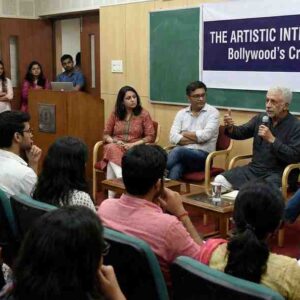Mumbai – 2025
On-screen, they are invincible. Off-screen, they are admired, dissected, and mythologized. Yet behind the applause, box office charts, and curated social media feeds,actors live with an intensity few outside the craft can understand.
In an industry built on public perception, where every move is magnified and every silence speculated upon,Bollywood actors carry a psychological burden—of reinvention, rejection, comparison, and emotional labor. As conversations around mental health grow louder in India, it’s time we look beyond the glamour and ask:what does it really take to live a life in front of the camera?
The Role That Never Ends
Acting isn’t just a skill—it’s apsychological occupation.
To embody another’s life requires:
- Emotional recall from personal trauma
- Suppression of one’s identity
- Shifting between emotional states multiple times a day
- Navigating intimate scenes with strangers under direction
- Performing vulnerability in front of dozens of crew members—and later, millions of viewers
Over time,the boundary between role and reality blurs, leaving many actors emotionally depleted.
The Unspoken Pressure of Relevance
In Bollywood, relevance is currency. Actors—especially women—often operate under:
- Age pressure (“shelf life” before 35)
- Social pressure (online trolling, body shaming)
- Media pressure (constantly curated images, paparazzi surveillance)
- Financial pressure (EMIs on lavish homes, unpaid dues, career gaps)
The fear of “being forgotten” can trigger chronic anxiety, impostor syndrome, and compulsive productivity—often masked as ambition.
Rejection Is Routine—But Never Easy
Even for established stars, rejection is constant:
- Auditions that go unanswered
- Projects shelved after months of prep
- Roles written for others, not you
- Reviews that judge you, not just your work
Actors are trained to “bounce back,” butrepeated invalidation in public viewcan lead to depression, burnout, or withdrawal.
The Therapy Taboo: Slowly Lifting
While stars likeDeepika Padukone,Anushka Sharma, andShaheen Bhatthave spoken openly about depression and therapy, the majority of actors still face:
- Stigma within the industry
- Fear of being labelled “unstable”
- Lack of time, trust, and confidentiality in seeking help
- Tokenized wellness programs on high-stress sets
Only a handful of studios now offeron-set counsellors or mental health partners, though demand is rising—especially among newcomers navigating fame too fast.
Method Acting and Its Shadows
Method acting—immersing into a character’s psyche—can cause:
- Emotional residue(actors carrying trauma beyond the role)
- Relationship issues(disconnection from personal identity)
- Sleep disorders, irritability, and dissociation
Heath Ledger’s Joker and Sushant Singh Rajput’s career are often referenced as examples ofpsychological immersion without emotional exits.
What Can Change?
- On-set mental health professionals
- Contracts that mandate recovery time post intense roles
- Workshops on emotional regulation for actors and directors
- Anonymous therapy funds backed by guilds or unions
- Awards and recognition for actors prioritizing emotional authenticity over spectacle
Final Word
Acting is not just craft. It’s exposure. And in exposing their hearts, bodies, and histories for our entertainment, actors pay a price the audience rarely sees.
They may wear costumes—but they carry the role in their nervous systems.
It’s time the industry—and we, the viewers—acknowledge that performance isn’t always painless.












